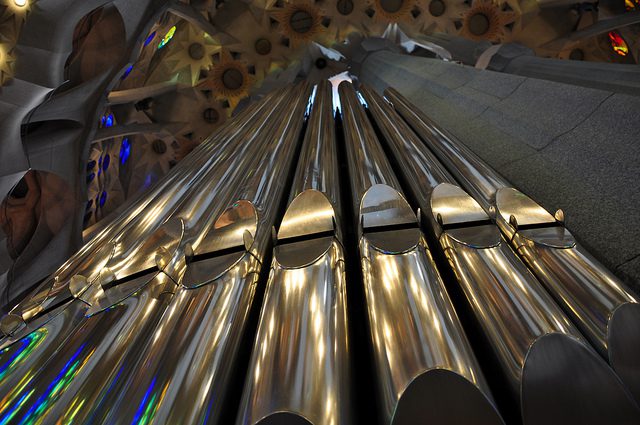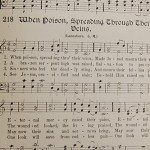John Blackburn was a classmate of mine at Baylor University. The first time I heard John play a service was the first time I can remember being struck by the incredible versatility of the pipe organ, and the way the instrument can draw the song out of a congregation. I asked John what makes the organ so good at leading congregational singing. This was his answer.
I think the primary benefit of using an organ in worship is the dynamic range and color that one can get out of the instrument. From the softest whispers to the grandest fortes, the organ is the only instrument that is capable of producing the sheer scale of volume that is needed to not only lead a congregation in singing, but also to provide accompaniment to a choir or soloist, and then to stand alone and perform its own solo repertoire. I should add that I mean the only instrument without the need of amplification. A piano must be amplified unless the setting is small. A guitar cannot carry the weight of the congregation in singing unless it is rendered through a sound system. And while an orchestra can lead hymns and anthems, only the organist can be called upon to improvise or render a different harmony on the spur of the moment.
With color we mean the different sounds at the organist’s disposal. The range of pitches available are larger that a piano’s range, even on a small instrument. Coupled with the variety of sound one can garner out of the instrument, the organ in capable hands can sound clean and fresh with each playing. Whereas a piano is one type of sound—a struck wire string—the organ can change sounds, pitch, volume all by selecting a handful of stops. From fiery tuba and trumpets to lush strings, to brilliant flutes and broad diapasons, the organ is a virtual orchestra unto itself.
Another benefit is the organ’s sustaining ability. Rather than constantly having to re-strike a key to sustain long notes or phrases, the organ can provide a long tone or pitch. Think of the benefits of a pedal point in music—what other single instrument can produce that power while, at the same time, playing a hymn or an anthem in accompaniment.
The organ is an instrument that when played correctly (and there are a lot of sub-par organists which is one of our biggest problems) can invoke not only a range of emotions (joy at a bride’s procession, somberness at a funeral), but can also help to weave the portions of the Liturgy together seamlessly. While other instruments are capable of doing that, none can do it with the musical fineness that the can: The crescendo into the doxology; The improvisation at Communion; the voluntary to send the Body of Christ out into the world, the rattle of the church or cathedral at a Tenebrae service.
Yes, in our 21st-century world we have electronic guitar, pianos, even electric drums sets. Yes, we can power up the amplifiers and pipe music into the church at a deafening tone. Yes, we can simulate an organ on a keyboard. But the organ during a hymn only asks one thing of the congregation: Sing with me!
John L. Blackburn is the Organist and Choirmaster at Saint Philip’s Episcopal Church of Beeville, having previously served as Director of Music Ministries at Saint Paul’s Episcopal Church and Organist for Temple Rodef Shalom, both in Waco. Currently, Blackburn is an Adjunct Professor of Music at Coastal Bend College, Beeville Campus. Mr. Blackburn is a graduate of Baylor University, receiving his Bachelor degree in Church Music with Organ Emphasis and a Master of Music in Church Music degree from Baylor. He is a member of the American Guild of Organists, Organ Historical Society, Pi Kappa Lamba, The Hymn Society of the United States and Canada, and The Royal School of Church Musicians.
Mr. Blackburn has also participated in the Doctorate of Musical Arts program from the University of Texas at Austin, where he studied with Judith and Gerre Hancock.
Photo:
Flickr, creative commons 2.0











